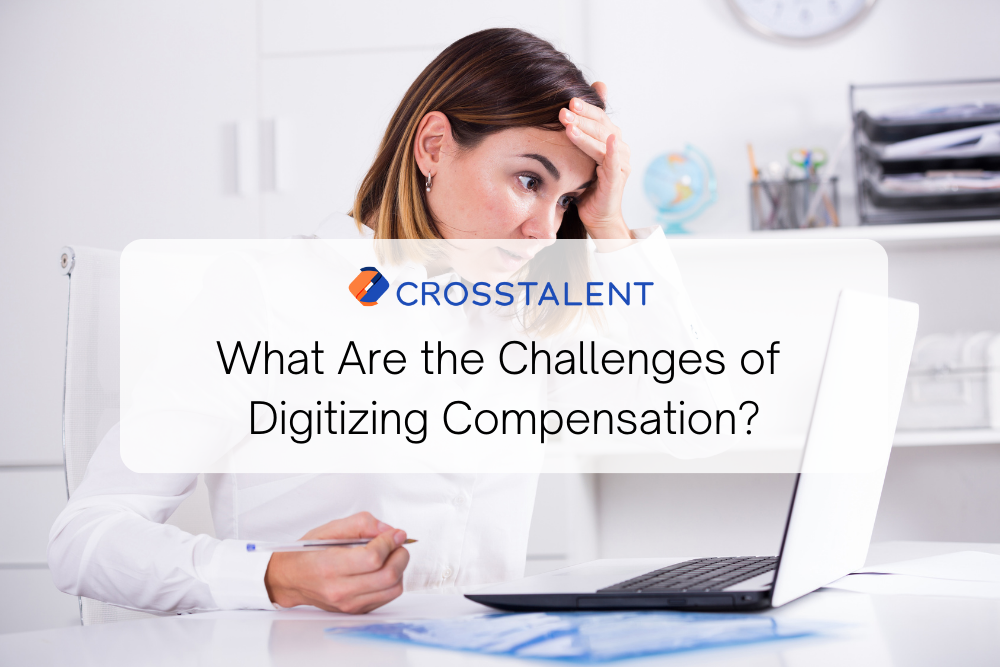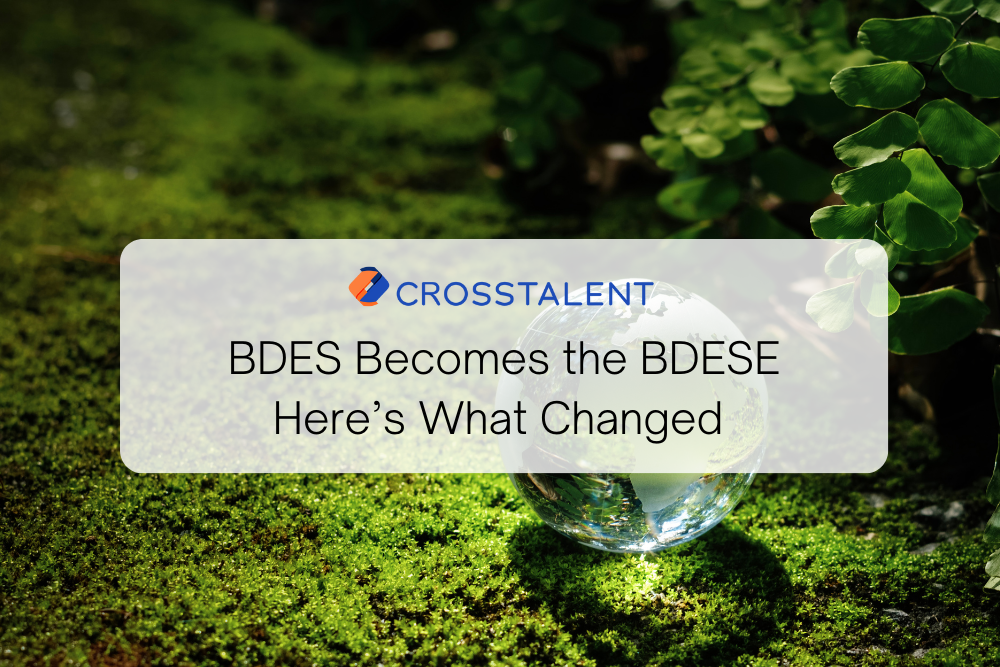Artificial intelligence (AI) has been on the rise in the HR department for several years. Some functions are more concerned than others, notably recruitment via resume sorting and pre-selection, but also for workforce and talent management.
What is AI Used for Today?
In concrete terms, AI has the ability to :
- Co-write a job offer or job description
- Create a shortlist of candidates for a specific position
- Suggest training courses for employees based on their interests and the skills they need to develop
- Make internal mobility proposals to an employee based on his/her wishes and skills
- Answer “simple” HR questions via a chatbot
In this article, we’ll look at these different aspects. But first, let’s start by explaining the difference between AI and automation.
Artificial Intelligence vs. Automation
There’s a clear difference between AI and non-AI automation—both in the way they work and in the results they can produce. In general, AI relies on models and algorithms to autonomously find patterns (called models) in data to provide insights, predictions, and recommendations.
In contrast, automation is traditionally used for processes.
In cases where data is structured, rules are defined (with few exceptions) and interactions with multiple systems are required. Automation use cases are mainly task-oriented.
We are often told it’s AI when, in fact, it’s programming or automation. For example, a workforce management tool that sends out interview invitations for you is not AI.
There are a multitude of benefits to AI (below), but there are also certain limitations, as setting up an AI tool can be extremely time-consuming, and the solutions come at a high cost.
AI and Recruitment: Is it a Perfect Marriage?
Recruitment is the HR field where AI is most present. Big companies such as GAFA have been taking an interest for about a decade now. But why?
The Benefits of AI in Recruitment
The first thing AI can do for you is to help you draw up a job offer but to do this; you need to define what a “Good Candidate” is. This “good candidate” could be totally different depending on the sector of activity, the company, and even the department. So, how do we go about it?
Before recruitment begins, HR and the manager need to start by defining a performance grid and selection criteria. Artificial intelligence will be useful if, and only if, it has sufficient information to analyze and sort through the various profiles.
The second reason for the popularity of AI in recruitment is that it saves time and optimizes processes, thanks in particular to CV pre-screening, where Artificial Intelligence will analyze CVs to break them down into bricks (experience, training, skills, etc.). In order to be able to link all these events and find out which career path/candidate is the most coherent (we call this a match) for the position in question.
The interest is all the greater when a recruiter receives several hundred or even thousands of applications. The idea is that AI will analyze this large volume of CVs, pre-select and thus provide a different view of a CV.
The third use of artificial intelligence is in virtual interviews. Again, in the case of large volumes, it provides an initial analysis via video CV or questions. The AI will analyze the answers, expressions and behavior and synthesize this initial interview feedback. This saves recruiters an enormous amount of time, as they can neither watch 100 videos nor go through 500 CVs.
The Risks of AI in Recruitment
Cloning Candidates
The first is the risk of selecting only clones. In fact, to program the AI, we give it criteria that will enable it to create one or more models and to award marks to the candidates who most closely resemble this model or these models.
These candidates must therefore match the models as closely as possible according to their job expertise, personality traits, expressions used, academic background, etc.
If we take the people already present in the company as a model, instead of having a fresh eye and new ideas, we get clones. It will, therefore, be much more difficult to select people who think “out of the box” and who could, for example, come up with a new product, a new concept, etc., which, by domino effect, will lead to a significant loss from a competitive point of view.
A second limitation is that a candidate can bias the AI if he knows how it works, so as to adapt to his expectations in order to stick to the standard that is required.
Lack of Diversity
The second risk, which is related to the first, is that AI—if badly parameterized—can be an obstacle to diversity in hiring. This is because bias (even unintentional bias) can appear as early as the job posting stage.
In order for the matching between applications and job offers to be carried out correctly, and for the diversity of profiles selected by artificial intelligence to be possible, job offers need to be drafted in a certain way. In particular, it’s important to avoid asking for a specific school; a language doesn’t have to be native to be well spoken, etc…
Missing Out on Candidates
Some candidates may not wish to be recruited by a robot, preferring human contact. They may also be very sensitive to the protection of their personal data.
This can pose a major problem: the mismatch between the company’s values, such as “people first,” and its recruitment methods. Some candidates may not agree with this dichotomy and suspend their recruitment on ethical grounds.
However, we must not overlook other candidates who, on the contrary, will see in these new technologies the image of a hyper-connected company and, therefore, an ideal employer.
Today, a classic use of AI is to automate the extraction of information from CVs and then perform a matching operation. Its main aim is to find the best possible match between a job and a CV. But the new challenge in today’s world of work (which can be tense in some sectors) is to find the “potentials,” not the exact matches.
To find a person who has already held exactly the same position, you don’t need sophisticated artificial intelligence. On the other hand, to find profiles that could evolve (with training, coaching, etc.) into this or that new position, you need much more advanced AI.
Other Applications of Artificial Intelligence in HR
While AI is increasingly present in the recruitment phase, it is also being developed during employees’ careers, with the aim of improving the employee experience.
Chatbots
According to the Larousse dictionary, a chatbot is a “computer program based on artificial intelligence, capable of answering a web user’s questions in real-time, thus acting as a virtual advisor” or, in our case, an HR manager.
The chatbot can answer repetitive and operational questions, thus freeing up HRM time. On the employee side, chatbots enable employees to get quick answers to their questions or perform certain tasks (requesting time off, consulting pay slips, etc.).
Training
When it comes to training, AI will offer employees training courses based on their interests and the skills they need to develop. AI is also going to help employees move into new professions (always through training courses designed for this new profession). As a result, employees feel more confident about preparing for “tomorrow.”
Internal Mobility
Does your HRIS system include a skills repository? If so, AI can help you match certain skills with positions and propose suitable jobs for internal mobility.
Studies and Forecasts
AI also plays a very important role in HR forecasting and studies, thanks to the analysis of collected data. Artificial intelligence can thus analyze and propose scenarios to develop the organization’s financial performance, anticipate recruitment, etc.
Focus on ChatGPT
We couldn’t talk about AI and HR without mentioning THE topic: Chatgpt.
Could it be useful in HR? Yes, to a certain extent, provided a human proofreads it.
Here are a few examples of possible applications
- Write job descriptions or job offers
- Generate interview questions
- Write responses to candidates,
- Write advertisements for your website or social networks, etc.
In conclusion, HR (HRD, HRM) and artificial intelligence are complementary today, but AI will not replace humans, at least not yet. Firstly, because we’re still in the early stages of its application, and overall—given its cost of implementation—it’s still mainly present in very large companies. However, when it is deployed, AI makes it possible to eliminate tasks.
_________
Digitize your human resource functions further with Crosstalent. Our module-based HRIS software automates Recruitment tasks and streamlines workflows for increased productivity.
Book a demo with our team to find out more about our solutions.




